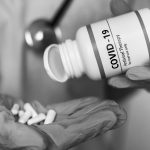
Key facts
- A mastectomy is surgery to remove your breast.
- A bilateral (double) mastectomy is removal of both breasts.
- A mastectomy is one of the treatments for breast cancer.
What is a mastectomy?
A mastectomy is an operation to remove your breast. A bilateral (double) mastectomy involves the removal of both breasts.
When is a mastectomy needed?
A mastectomy is usually done to treat breast cancer. Breast cancer is when cells start to grow abnormally in your breast. It can spread to other parts of the body.
Surgery is just one of the treatments for breast cancer.
Some people with a high genetic risk of breast cancer may choose to have a bilateral mastectomy to reduce their risk of getting breast cancer. This is called a preventive, or ‘prophylactic’ mastectomy.
Breast cancer treatment
Mastectomy is one type of surgery for breast cancer. The other type is breast-conserving surgery. This is where just the part of your breast affected by cancer is removed.
A mastectomy may be recommended for several reasons, including if:
- the breast cancer is large compared with your breast size
- there is more than one cancer in your breast
- you have had breast cancer before
Some people with breast cancer choose to have a mastectomy rather than breast-conserving surgery.
How to prepare for a mastectomy
If you are having a mastectomy, you will meet with your surgeon and anaesthetist to discuss the surgery.
You may be able to have breast reconstruction surgery immediately after the mastectomy. If so, you can discuss this with the plastic surgeon before the surgery.
Your doctor will also talk with you about whether you need to stop taking any of your usual medicines before your surgery. They will ask you to fast (stop eating and drinking) several hours before having the surgery.
What happens during a mastectomy?
The procedure is usually performed under general anaesthetic, which means you are asleep during surgery.
Your surgeon will make a cut around your breast to remove the breast tissue. The skin covering your breast and nipple may also be removed.
One or more lymph nodes are also usually removed from under your arm.
The operation usually takes 1 to 2 hours. It may take longer if you have a breast reconstruction at the same time.

Recovering from a mastectomy
After a mastectomy, you may need to stay in hospital for up to a week, depending on your situation.
You may feel some pain, discomfort or numbness in your breast or armpit while your wound heals. You can take pain-relief medicines to help with this.
You will have a dressing over your wound. You may also have a drainage tube to drain fluid from the wound. Your doctor and breast care nurse will show you how to care for your wound.
Ask your breast care nurse about your recovery and what to expect after your mastectomy.
Possible risks or complications
Speak to your doctor about possible side effects of the surgery. Most side effects can be treated or reduced.
Your doctor will discuss the risks of surgery with you, including the risks of any procedure, such as:
- risks with the anaesthetic
- bleeding
- infection
Your doctor will also talk with you about risks or possible complications of mastectomy, which can include the following:
- fluid build-up around your scar
- shoulder and arm stiffness
- pain, numbness and tingling
- lymphoedema
Fluid build-up in or around your scar
There may be fluid build-up around your scar — called a seroma. This may need to be drained.
Shoulder and arm stiffness
You may have pain, weakness or stiffness in your shoulder and arm after your surgery.
Talk to your doctor if you have these symptoms. They may suggest you see a physiotherapist for some exercises to help.
Pain, numbness and tingling
A mastectomy and lymph node removal from under your arm can cause:
- nerve pain in your chest, arm or armpit
- numbness or tingling in your in the chest, arm or armpit
These feelings usually improve over a few weeks or longer.
Lymphoedema
Removal of lymph nodes under your arm in your armpit can increase your risk of a condition called lymphoedema.
Lymphoedema can cause ongoing swelling of your arm, hand or fingers on the side of your breast surgery.
Mastectomy and body image
Breast cancer and its treatment, such as mastectomy, can impact your body image and self-esteem. Some women experience a reduced libido (desire for sex) after having a mastectomy. It’s also common to feel a sense of loss or grief.
These feelings usually settle over time. It’s important to focus on yourself as a whole person, rather than focus on the part of you that has changed.
You can discuss feelings about body image and sex with your breast care nurse or doctor, and your partner if you have one. A sexual health counsellor or psychologist may be able to help if you need more specialised help.
Undergoing a breast reconstruction, wearing a prosthesis or using a ‘soft form’ after a mastectomy may help improve your self-confidence. Breast prostheses are synthetic breasts or parts of a synthetic breast worn inside a bra (or attached to your body with adhesive).


